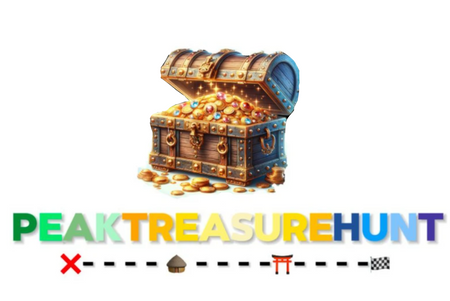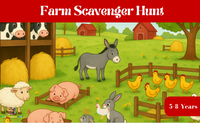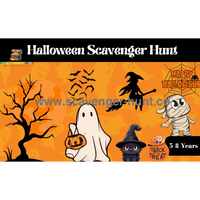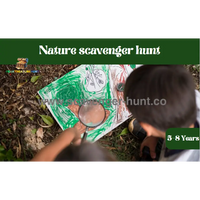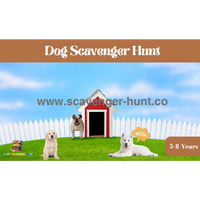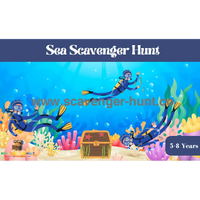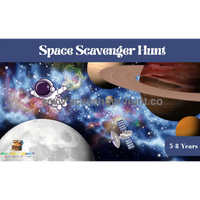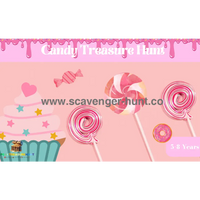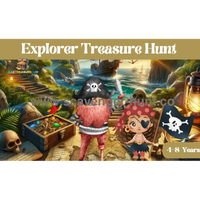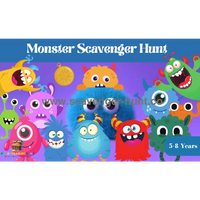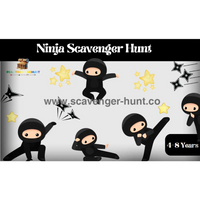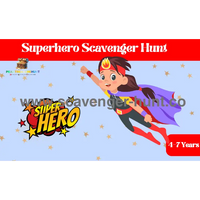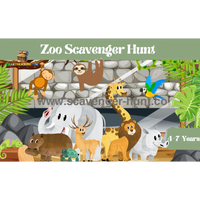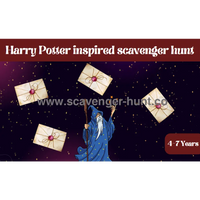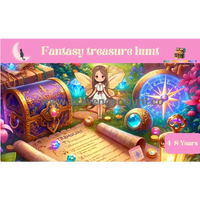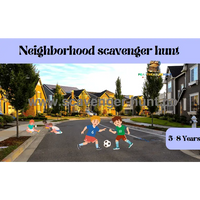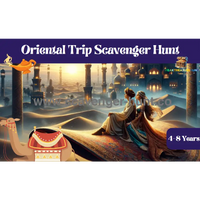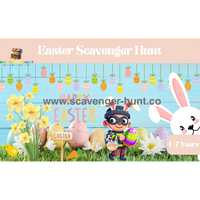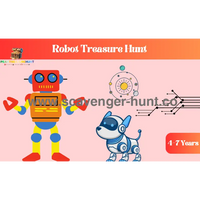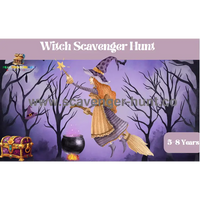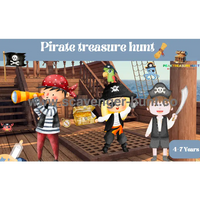🎉🧨Magical Adventures: Creating Unforgettable Themed Treasure Hunts
Introduction
Hi! As a professional party planner and mother of four creative kids in München, I've organized hundreds of themed treasure hunts that have transported children into magical worlds. Whether your little one dreams of being a princess, superhero, or dinosaur expert, a well-planned themed hunt can make those dreams come alive! From transforming German apartments into enchanted castles to turning Stadtparks into prehistoric adventures, I'll share how to create unforgettable experiences for children aged 4-12. According to recent studies, themed activities increase children's engagement by 85% compared to standard games!
Choosing Your Perfect Theme
Success in themed treasure hunts starts with selecting the right theme:
- Princesses & Knights (especially popular in Bavaria!)
- Dinosaur Adventures
- Superhero Missions
- Space Exploration
- Fairy Tales (featuring German classics)
Pro-Tip: Match themes to age groups - my experience shows that dinosaurs work best for ages 4-8, while superhero missions engage older kids.
Choosing the right theme for your project can be a transformative experience, akin to selecting the perfect outfit for a special occasion. A theme sets the tone, guides the aesthetic, and creates a lasting impression. Whether you’re working on a website, a presentation, or even a personal blog, the theme you choose can significantly impact how your audience perceives your message. So, let’s dive into some key considerations that will help you find your perfect theme! 🎨✨
Understanding Your Audience
Before you even think about colors and fonts, take a moment to understand who your audience is. Are they young and trendy, or more traditional and professional? Understanding your target demographic can help you select a theme that resonates with them. For instance, a vibrant and playful theme might appeal to a younger audience, while a minimalist and elegant theme might be better suited for a corporate environment. 🕵️♂️
Define Your Purpose
Next, think about the purpose of your project. Is it to inform, entertain, or persuade? Your theme should align with your goals. For example, if you’re creating a blog to share travel experiences, a theme that showcases stunning photography and vibrant colors will draw readers in. On the other hand, if you’re designing a portfolio to attract clients, a sleek and professional theme will convey your expertise effectively. 🎯
Exploring Design Elements
Color Palette
Colors evoke emotions and can set the mood of your project. Consider the psychology of colors when choosing your palette. Blues often convey trust and professionalism, while reds can evoke passion and excitement. Choose a palette that reflects your brand’s personality and resonates with your audience. Use tools like Adobe Color or Coolors to experiment with different combinations! 🌈
Typography
Typography plays a crucial role in readability and aesthetics. The fonts you choose should not only be easy to read but also reflect the theme of your project. For a playful vibe, you might opt for a quirky, handwritten font, whereas a more serious project might require a clean, sans-serif font. Be mindful of using too many different fonts, as this can create a cluttered look. Stick to two or three complementary fonts for a polished appearance. ✍️
Imagery and Graphics
High-quality images can elevate your theme significantly. Whether you’re using stock photos, illustrations, or your own visuals, ensure they align with your overall message and style. If your theme is vibrant and energetic, opt for dynamic and colorful images. Conversely, if you’re aiming for a sophisticated look, choose more subdued and elegant visuals. Don’t forget to maintain consistency in style across all imagery! 📸
Finding Inspiration
Sometimes, inspiration strikes when you least expect it. Explore platforms like Pinterest, Behance, or Dribbble to discover themes that resonate with you. Look for designs that capture your imagination and align with your project’s objectives. Creating a mood board can also be a helpful way to compile ideas and visualize how different elements work together. 💡
Test and Iterate
Once you’ve narrowed down your options, it’s time to test your theme. Share your designs with friends, family, or colleagues and gather feedback. Are they able to understand the message clearly? Does the theme resonate with them? Use this feedback to make necessary adjustments. Sometimes, a small tweak can make a significant difference! 🔄
Conclusion
Choosing your perfect theme is a blend of art and strategy. By understanding your audience, defining your purpose, and carefully selecting design elements, you can create a theme that not only looks great but also effectively communicates your message. Remember, your theme is the first impression your audience will have, so make it count! Happy designing! 🌟
Creating Immersive Decorations
Transform spaces for your themed hunt:
- Use bedsheets for castle walls
- Create "ancient ruins" from cardboard boxes
- Make "laser beams" with red yarn
- Design themed "portals" between areas
Studies show that decorated environments improve imagination by 73%!
Decorating a space isn’t just about making it look nice; it’s about creating an atmosphere that draws people in and evokes emotions. Whether you’re planning a cozy family gathering, a lively party, or just sprucing up your living area, immersive decorations can transform any environment. In this chapter, we’ll explore tips and ideas for crafting decorations that not only beautify but also engage the senses and tell a story. 🎉✨
Understanding Immersion
Immersive decorations go beyond the visual; they create an experience that envelops your guests and makes them feel part of the environment. Think of it as a way to transport your audience to another world—whether that’s a serene beach, a rustic cabin, or a whimsical fairy tale. To achieve this, consider how various elements—color, texture, scent, and sound—can work together to enhance the atmosphere. 🌍
Setting the Scene
1. Choose a Theme
The first step in creating immersive decorations is selecting a theme. A clear theme provides a cohesive framework that guides your design choices. Here are some popular themes to consider:
-
Rustic Charm: Incorporate natural elements like wood, burlap, and greenery to evoke a cozy, country feel. 🌾
-
Bohemian Bliss: Use vibrant colors, eclectic patterns, and a mix of textures to create a laid-back, artsy vibe. 🎨
-
Under the Sea: Bring the ocean to your space with shades of blue, fish nets, seashells, and ocean-themed decor. 🌊
-
Enchanted Forest: Create a magical ambiance with fairy lights, lots of greenery, and whimsical decor elements like mushrooms and twinkling stars. 🌟
2. Focus on Colors and Textures
Once you have a theme, it’s time to choose a color palette and textures that enhance that theme. Colors can set the mood and create feelings. For example:
-
Warm colors (reds, oranges, yellows) evoke energy and excitement, perfect for lively gatherings.
-
Cool colors (blues, greens, purples) can create a calming, serene environment, ideal for relaxing spaces.
Textures add depth and interest. Consider mixing smooth surfaces (like glass and metal) with rougher ones (like wood and fabric) to create a tactile experience. Think about using:
-
Soft fabrics: Cushions, throws, and drapes can add warmth and comfort.
-
Natural materials: Incorporate stone, wood, and plants for an earthy feel. 🌱
Engaging the Senses
1. Scent
Never underestimate the power of scent in creating an immersive experience. Scents can evoke memories and emotions, so choose fragrances that align with your theme. Here are some ideas:
-
Citrus scents for an energetic and refreshing atmosphere.
-
Lavender or vanilla for a calming and cozy vibe.
-
Ocean-inspired scents with notes of salt and sea breeze for a beach-themed space.
Consider using essential oil diffusers, scented candles, or fresh flowers to infuse the space with delightful aromas. 🕯️
2. Sound
Music and ambient sounds can elevate the mood and enhance the immersive experience. Create a playlist that complements your theme. For example:
- Play soft acoustic music for a rustic gathering.
- Use upbeat tunes for a vibrant party.
- Add nature sounds (like ocean waves or birds chirping) for a tranquil atmosphere.
If you have the resources, consider using sound machines or Bluetooth speakers strategically placed throughout the space to create an enveloping soundscape. 🎶
Creative Decoration Ideas
1. DIY Projects
Get crafty and personalize your decorations! Here are some fun DIY projects to consider:
-
Mason Jar Lanterns: Fill mason jars with fairy lights or candles and hang them for a magical touch.
-
Photo Walls: Create a collage of photos that tell a story or reflect the theme. You can use string lights to highlight the display! 📸
-
Themed Centerpieces: Craft centerpieces that align with your theme. For a beach theme, use sand, seashells, and candles in glass containers.
2. Layering Decor
Layering different decorative elements can create visual interest. Start with a base (like tablecloths or area rugs), then add layers with:
-
Draped fabrics: Hang fabric from ceilings or walls to create a cozy, enveloping feel.
-
Varying heights: Use items of different heights for centerpieces—think tall vases alongside shorter candles. This adds dimension and draws the eye. 🌈
Final Touches
Don’t forget the little details! Small touches can have a big impact:
-
Personalized items: Incorporate items that reflect your personality or tell your story, like travel souvenirs or family heirlooms.
-
Interactive elements: Consider adding games or activities that encourage guest interaction. For example, a photo booth with props related to your theme can be a hit! 📸
Conclusion
Creating immersive decorations is all about crafting an environment that engages the senses and tells a story. By carefully selecting a theme, engaging multiple senses, and incorporating creative elements, you can transform any space into a captivating experience. Remember, the goal is to make your guests feel like they’ve stepped into another world—one that you’ve lovingly created just for them. So gather your materials, unleash your creativity, and get ready to wow your audience! Happy decorating! 🥳✨
Designing Theme-Specific Clues
Customize clues for your themed treasure hunt:
- Princess hunts: Mirror riddles and crystal challenges
- Superhero quests: Secret codes and "villain" messages
- Dinosaur expeditions: Fossil finds and footprint tracking
- Space missions: Star maps and alien messages
Remember: Keep German translations handy for bilingual families!
Creating an engaging experience for your guests—whether at a party, an escape room, or a themed event—often hinges on the clever use of clues. These clues not only add excitement but also deepen the immersion in your theme. In this chapter, we’ll explore how to design theme-specific clues that capture the imagination, challenge participants, and enhance the overall experience. Let’s unlock the secrets to captivating clues! 🗝️✨
Understanding the Importance of Clues
Clues are essential elements in any themed experience. They serve as guides, pushing participants to think critically and creatively as they unravel the mystery. The right clues can evoke emotions, create suspense, and spark curiosity. Think of them as breadcrumbs leading your guests on an adventure, with each clue bringing them closer to the ultimate prize or revelation. 🍞🔍
Choosing Your Theme
Before you can design effective clues, you must choose a theme that resonates with your audience. Some popular themes include:
-
Mystery & Detective: Perfect for solving crimes or uncovering secrets. 🕵️♂️
-
Fantasy Adventure: Ideal for enchanted forests, mythical creatures, and quests. 🧚♂️
-
Historical: Take guests on a journey through time, exploring different eras. ⏳
-
Horror: Create spine-chilling experiences with creepy settings and eerie stories. 👻
Once you have a theme in mind, you can tailor your clues to enhance the narrative and keep guests engaged.
Types of Clues
1. Riddles and Puzzles
Riddles and puzzles are classic clue types that encourage participants to think critically. They can be straightforward or complex, depending on your audience. When creating riddles, consider the following:
-
Relevance: Ensure the riddle ties back to your theme. For instance, if your theme is a pirate adventure, a riddle about buried treasure will fit perfectly. 🏴☠️
-
Difficulty: Balance the difficulty level to keep participants engaged without overwhelming them. A well-crafted riddle should challenge but not frustrate.
Example: For a detective theme, you might use a riddle like: “I have keys but open no locks. I have space but no room. You can enter, but you can’t go outside. What am I?”
(Answer: A keyboard)
2. Hidden Messages
Hidden messages can add an element of surprise and intrigue. You can incorporate them through various methods, such as:
-
Invisible ink: Write clues with lemon juice that can only be revealed when heated. 🔥
-
Decoding ciphers: Use substitution ciphers where letters are replaced with symbols or numbers. For example, “A = 1, B = 2” could lead guests to discover a location or a combination for a lock.
Example: In a fantasy-themed event, you could use a map where certain locations are marked with symbols that correspond to a legend. Each symbol reveals a part of a secret message.
3. Physical Clues
Physical clues are tangible items that participants can interact with. They can range from simple objects to complex setups. Here are a few ideas:
-
Props: Incorporate themed props that serve as clues. For instance, a vintage key could unlock a box containing the next clue. 🔑
-
Environmental clues: Use your surroundings to your advantage. Arrange furniture, decor, or even lighting to guide participants to the next step. In a horror theme, a flickering light might signal danger or a hidden clue.
4. Visual Clues
Visual clues rely on imagery to convey information. Consider the following strategies:
-
Photography: Use pictures that hold significance or hint at locations. For example, a photo of a landmark might indicate the next destination in a treasure hunt. 📸
-
Artistic representations: Create illustrations or diagrams that provide clues. In a sci-fi theme, a schematic of a spaceship might contain instructions for the next challenge.
Integrating Clues into Your Narrative
Every clue should serve a purpose within your theme’s story. As you design your clues, think about how they advance the plot or reveal character backstories. Here’s how to integrate them effectively:
1. Create a Story Arc
Develop a clear story arc that outlines the beginning, middle, and end of your event. Each clue should contribute to this narrative flow. For example, in a detective theme, clues might reveal the motive, the suspect, and ultimately, the resolution of the case.
2. Build Suspense
Strategically place clues to create tension and suspense. Clues that lead to dead ends or unexpected twists can keep participants on their toes. For example, a seemingly innocent object might later reveal its darker significance.
3. Reward Progress
As participants solve clues, reward them with progression in the story. This could be new pieces of information, access to new areas, or even small prizes. Celebrating their successes keeps motivation high and encourages continued engagement. 🎉
Testing Your Clues
Before the big day, test your clues with a small group of friends or family. This will help you gauge the difficulty level and ensure that the clues are clear and logical. Ask for feedback on the overall flow and excitement level of the experience. Adjust based on their suggestions to create a smoother and more enjoyable experience for your guests. 🔄
Conclusion
Designing theme-specific clues is an art that requires creativity, strategic thinking, and a deep understanding of your audience. By carefully crafting riddles, hidden messages, physical and visual clues, and integrating them into a compelling narrative, you can create an immersive experience that captivates and challenges participants. Remember, the goal is to take your guests on a journey, leaving them with memories of adventure, mystery, and fun. So, get creative, think outside the box, and prepare to watch your theme come alive through cleverly designed clues! 🗝️🎈
Props and Costumes
Essential items for your themed adventure:
- Basic costumes (capes, crowns, explorer hats)
- Theme-specific tools (magic wands, spy glasses)
- Special effects (battery-operated lights)
- Themed music playlists
Our research shows costumed activities increase participation by 92%!
When it comes to creating an unforgettable experience, props and costumes play a crucial role. They not only enhance the visual appeal of an event but also help to immerse participants in the theme and story you’re trying to convey. Whether you’re hosting a party, organizing a themed event, or setting up an escape room, the right props and costumes can transform a simple gathering into an extraordinary adventure. Let’s dive into the exciting world of props and costumes! 🎭✨
The Power of Props
Props are the tangible items that bring your theme to life. They can range from decorative elements to interactive items that engage your guests. Here’s how to effectively use props to elevate your event:
1. Setting the Scene
Props help create the ambiance of your event. They can transport your guests to a different world, whether it’s a haunted house, a fairy tale kingdom, or a futuristic spaceship. Here are some ideas for different themes:
-
Haunted House: Use cobwebs, skeletons, flickering candles, and eerie sound effects to create a chilling atmosphere. 🕷️
-
Fairy Tale: Incorporate elements like enchanted forests, magical creatures, and whimsical decorations. Think fairy lights, toadstools, and giant flowers. 🌸
-
Futuristic: Utilize metallic colors, geometric shapes, and sci-fi gadgets to give your space a high-tech feel. Consider LED lights and holographic images for added flair. 🤖
2. Interactive Elements
Interactive props can encourage guest participation and enhance the experience. Consider incorporating items that require action or decision-making:
-
Treasure Hunts: Use maps, clues, and treasure chests to guide participants through a scavenger hunt. 🗺️
-
Games: Set up props for games that fit your theme, such as giant Jenga for a rustic party or trivia cards for a movie-themed night. 🎲
-
Photo Booths: Create a designated area with fun props and backdrops where guests can take memorable photos. Use hats, masks, and signs that match your theme! 📸
3. Enhancing Storytelling
Props can be pivotal in storytelling. They help convey important information and can serve as vital clues in games or mysteries. Here’s how to use props to enhance your narrative:
-
Symbolic Objects: Choose props that represent key plot points or themes in your story. For example, a broken clock might symbolize lost time in a mystery. ⏳
-
Character Items: Props associated with specific characters can provide insight into their personalities or backstories. A detective’s magnifying glass or a princess’s tiara can add depth to the narrative.
The Magic of Costumes
Costumes are a powerful way to enhance the immersion of your event. They allow guests to embody characters and connect more deeply with the theme. Here are some tips for selecting and creating costumes:
1. Choosing the Right Costumes
When selecting costumes, consider the following:
-
Theme Alignment: Ensure that costumes match the overall theme of your event. If it’s a 1920s Gatsby party, flapper dresses and pinstripe suits are essential. 🎩
-
Comfort and Fit: Guests should feel comfortable in their costumes. Consider fabrics and styles that allow for easy movement, especially if they’ll be dancing or participating in activities. 💃
2. DIY Costumes
Creating your own costumes can be a fun and rewarding experience. Here are some DIY ideas:
-
Upcycling: Use items you already have at home. A white sheet can become a ghost, and old clothes can be transformed into a scarecrow. 🌾
-
Crafting: Use craft supplies like fabric, paint, and accessories to create unique costumes. You can make wings for a fairy or a crown for a queen. ✂️
-
Group Costumes: Encourage group costumes for added fun. Friends can dress as characters from a movie or a themed group, like the cast of a classic fairy tale.
3. Accessorizing
Accessories can take costumes to the next level. Here’s how to enhance your guests’ outfits:
-
Themed Accessories: Provide hats, masks, jewelry, or props that match the theme. For a pirate theme, consider eyepatches, tricorn hats, and toy swords! ⚔️
-
Makeup and Face Paint: Offer makeup stations with face paint or temporary tattoos that match the theme. A little sparkle or a dramatic look can really bring characters to life. 💄
Creating a Costume and Prop Station
If you’re hosting a large event, consider setting up a costume and prop station where guests can borrow or swap items. Here’s how to create an engaging space:
1. Display Options
Organize props and costumes on tables or racks. Use signage to guide guests and label different areas based on themes. Make it visually appealing by incorporating decorations that match your event. 🎊
2. Interactive Experience
Encourage guests to try on costumes and mix and match props. Consider having mirrors available for them to check out their looks. You could also have a photo booth set up nearby to capture their creativity! 📷
3. Provide Guidance
If you have a specific storyline or character guide, provide that information to your guests. This will help them choose costumes and props that fit the narrative and deepen their engagement with the experience. 📝
Conclusion
Props and costumes are essential components of any themed event, enhancing the overall atmosphere and inviting participants to immerse themselves in a story. By carefully selecting props that set the scene, designing interactive elements, and creating costumes that align with your theme, you can elevate your gathering from ordinary to extraordinary. So, unleash your creativity, encourage your guests to dress up, and let the magic of props and costumes transport everyone to a new world! 🌟🥳
Educational Integration
Sneak learning into your themed hunt:
- Geography through treasure maps
- Math via coded messages
- Science in space/dinosaur themes
- History through medieval quests
In today’s dynamic learning environment, integrating education with engaging activities and themes has become increasingly important. Educational integration not only enhances the learning experience but also promotes critical thinking, creativity, and collaboration among students. This chapter will explore how to effectively weave educational content into various themes and activities, making learning enjoyable and impactful. Let’s embark on this exciting journey of educational integration! 📚✨
Understanding Educational Integration
Educational integration refers to the process of combining various subjects and disciplines into a cohesive learning experience. Instead of teaching subjects in isolation, integration encourages connections between topics, allowing students to see the bigger picture and understand how different fields relate to one another. This holistic approach fosters a deeper understanding and helps students apply their knowledge in real-world situations. 🌍
Benefits of Educational Integration
-
Enhanced Engagement: Integrating educational content into themed activities captures students’ attention and motivates them to participate actively. When learning feels relevant and fun, students are more likely to engage deeply with the material. 🎉
-
Development of Critical Thinking Skills: By exploring multiple subjects simultaneously, students learn to analyze information from different perspectives and make connections, sharpening their critical thinking abilities. 🧠
-
Improved Retention: Thematic learning experiences often lead to better retention of information. When students can relate new knowledge to a theme or a real-world context, they are more likely to remember it. 📖
-
Collaboration and Social Skills: Integrated activities often require teamwork, encouraging students to collaborate, communicate, and develop their social skills. Working together fosters a sense of community and shared responsibility. 🤝
Designing Theme-Based Educational Activities
When planning integrated educational activities, it’s essential to align them with both the chosen theme and the learning objectives. Here’s how to create impactful experiences:
1. Select an Engaging Theme
Choose a theme that resonates with students and aligns with the curriculum. Some popular themes for educational integration include:
-
Environmental Awareness: Focus on sustainability, ecology, and the importance of preserving the planet. 🌱
-
Historical Events: Explore significant events, figures, and cultural movements through interactive activities. 🏛️
-
Science and Innovation: Dive into scientific discoveries, inventions, and the impact of technology on society. 🔬
-
Arts and Culture: Celebrate creativity by exploring various art forms, music, and cultural expressions. 🎨
2. Identify Learning Objectives
Clearly define the learning objectives for the activity. What concepts or skills do you want students to develop? Align the activities with educational standards to ensure they meet curriculum requirements. Consider incorporating multiple subjects, such as:
-
STEM (Science, Technology, Engineering, Math): For example, a science-themed event could include experiments, coding activities, and engineering challenges. 🧪
-
Literacy and Language Arts: Integrate reading and writing by having students create stories or presentations related to the theme. ✍️
3. Create Interactive and Hands-On Activities
Engage students through interactive, hands-on activities that encourage exploration and creativity. Here are some ideas:
-
Workshops and Labs: Organize workshops where students can participate in experiments or hands-on projects related to the theme. For instance, in an environmental awareness theme, students could conduct a waste audit or create recycling art projects. ♻️
-
Role-Playing and Simulations: Use role-playing activities to help students understand historical events or scientific processes. For example, students could reenact a historical debate or simulate a scientific discovery. 🎭
-
Group Projects: Encourage collaboration through group projects that require students to research, plan, and present their findings on a specific aspect of the theme. This fosters teamwork and critical thinking. 📊
4. Incorporate Technology
Leverage technology to enhance the learning experience. Here are some ways to integrate technology into your theme-based activities:
-
Digital Storytelling: Have students create multimedia presentations or videos related to the theme. This can include research, artwork, and narrative elements. 🎥
-
Online Collaboration Tools: Utilize platforms like Google Classroom, Padlet, or Trello to facilitate collaboration and communication among students during projects. 🖥️
-
Interactive Games and Quizzes: Use educational games or quizzes to reinforce learning and make it fun. Websites like Kahoot! and Quizlet can add a competitive edge to review sessions. 🏆
5. Assess Learning and Provide Feedback
Assessment is a crucial component of educational integration. Consider both formative and summative assessments to evaluate student learning. Here are some strategies:
-
Self-Assessment: Encourage students to reflect on their learning and assess their understanding of the material. This can be done through journals or discussion prompts. 📝
-
Peer Assessment: Foster collaboration by having students assess each other’s work. This not only reinforces learning but also builds a sense of community. 🤔
-
Performance-Based Assessment: Use performance-based assessments to evaluate students’ understanding of concepts through their participation in themed activities or projects. This allows for a more comprehensive evaluation of their skills. 🎤
Case Study: Integrating Science into a Historical Theme
Let’s take a closer look at how to integrate educational content through a case study. Imagine planning a unit on the Industrial Revolution that also incorporates science.
Theme: The Industrial Revolution
-
Learning Objectives: Understand the impact of the Industrial Revolution on society, the role of technology in advancements, and the scientific principles behind inventions.
Activities:
-
Invention Fair: Students research different inventions from the Industrial Revolution, create prototypes, and present their projects at an invention fair. They can explain the scientific principles behind their inventions, fostering connections between history and science. 🏗️
-
Science Experiments: Conduct experiments that mimic the processes used during the Industrial Revolution. For example, students can create simple machines or conduct experiments demonstrating the principles of steam power. 🔧
-
Field Trip: Organize a visit to a local science museum or historical site related to the Industrial Revolution, allowing students to see real-world applications of their learning. 🏛️
-
Debate: Host a debate on the ethical implications of industrialization, exploring both the benefits and challenges it presented to society. This activity encourages critical thinking and discussion. ⚖️
Conclusion
Educational integration is a powerful approach that enriches the learning experience and helps students make meaningful connections between various subjects. By selecting engaging themes, designing interactive activities, and incorporating technology, educators can create dynamic environments where students thrive. The goal is to make learning not just informative but also enjoyable, encouraging students to explore, collaborate, and think critically. So, embrace the power of educational integration and inspire the next generation of learners! 🌟🎓
Frequently Asked Questions
Q: How much does a themed treasure hunt typically cost?
A: With DIY decorations and clever shopping at German stores like TEDi and KiK, expect to spend €40-60 for a complete setup.
Q: How do I handle mixed age groups in themed hunts?
A: Create "level-appropriate" roles within the theme - younger kids can be "apprentice wizards" while older ones become "master sorcerers"!
Q: What are the most popular themes for German children?
A: Based on my experience, medieval themes (knights/princesses), dinosaurs, and fairy tale themes from Grimm's stories work especially well.
Q: How can I make themed hunts work in small spaces?
A: Focus on transforming everyday objects - a bathroom becomes a "dragon's cave," a hallway transforms into a "space station"!
Q: Should I reuse themes for the same group?
A: Wait at least 3-4 months before repeating themes, and add new elements each time.
Conclusion
Creating magical themed treasure hunts isn't about having the biggest budget or space - it's about imagination and attention to detail. From my years of experience bringing fantasy to life in German homes, I've learned that children don't need elaborate setups to believe in magic. They just need adults who are willing to play along and create the right atmosphere. Start with these basics, add your own creative touches, and watch as ordinary spaces transform into extraordinary adventures!
Discover our Complete Scavenger Hunts Collection.
